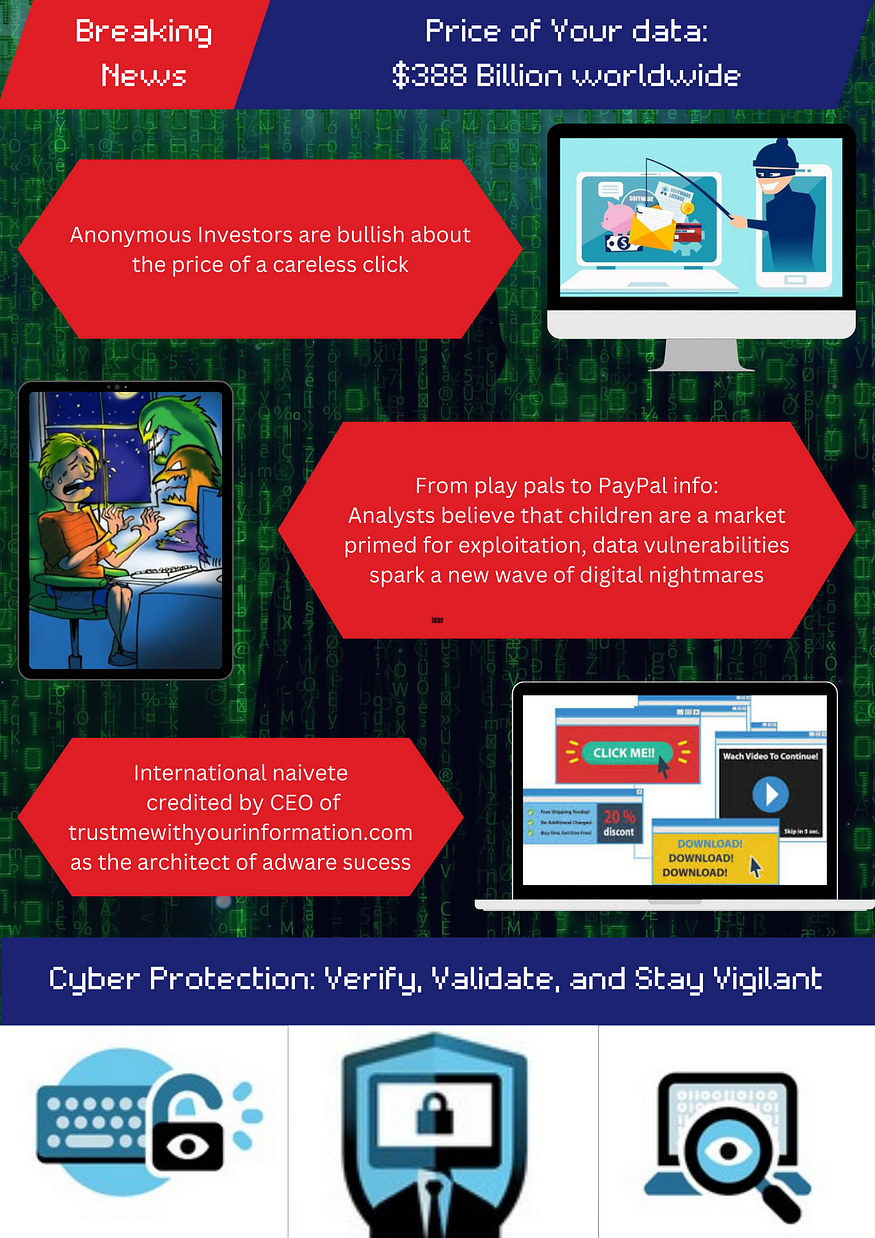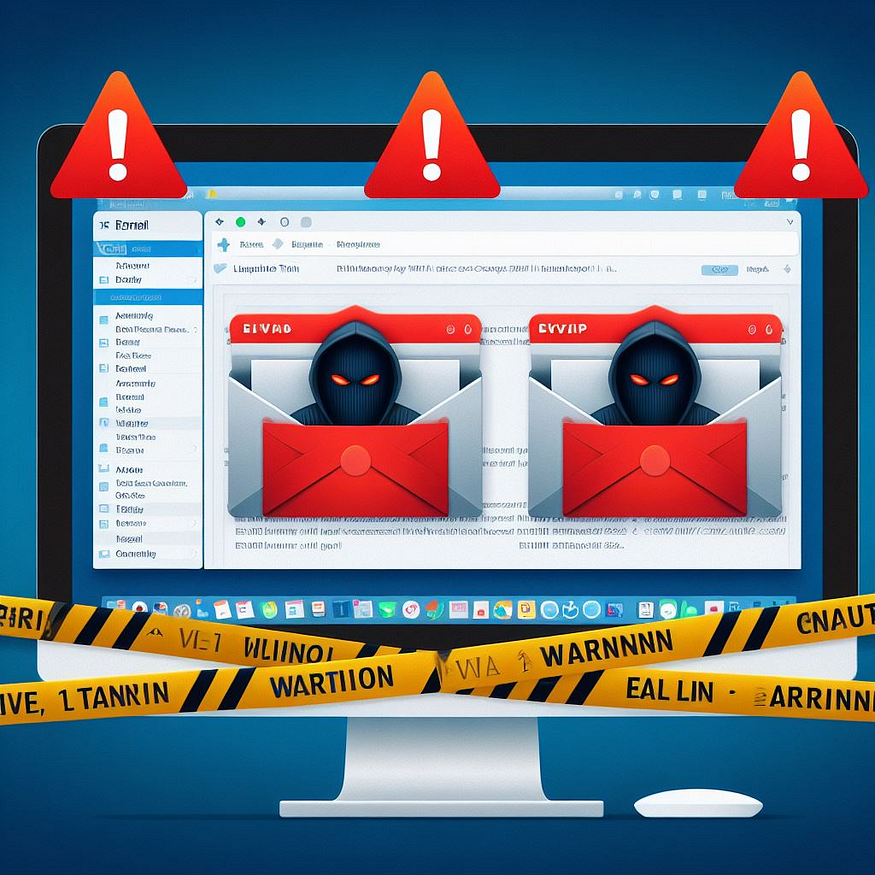How to protect yourself against the timeless cyberattack?
Rapid digitalization and the increasing role played by digital devices in day-to-day communications have brought the most niche corners of the world to be able to stay connected. However, the threat posed by well-targeted phishing attempts can’t be understated in this era where digital communication reigns supreme.
From the infamous Nigerian Prince promising wealth in exchange for your banking details, to seemingly innocuous emails masquerading as urgent alerts from your bank, the tactics of phishing attacks vary in sophistication. Yet, regardless of the level of cunningness employed, the consequences remain alarmingly real in leaving users or organizations vulnerable to identity theft & loss of sensitive information.
In this article, we’ll navigate the complex realm of phishing, offering insights into its nature, operations, and evolution alongside AI advancements, common strategies employed, and practical tips to protect yourself from these deceptive practices.
Let’s Go Phishing: Understanding the Basic Ethos Behind it

According to the official definition provided by the National Institute of Standards and Technology (NIST), it is defined as:
“A technique for attempting to acquire sensitive data, such as bank account numbers, through a fraudulent solicitation in email or on a web site, in which the perpetrator masquerades as a legitimate business or reputable person.” — (NIST SP 800–12 Rev.1 under phishing from IETF RFC 4949 Ver 2).
The entire operational ethos behind phishing attempts is therefore, an assumption that people tend to be dangerously trusting and callous when it comes to verifying the authenticity of links, emails, or websites before filling out sensitive data such as Personally Identifiable Information (PII). Even those who consider themselves immune to such attempts as they are “informed users”, tend to not follow best internet or email practices to stay safe & secure online.
Several different types of phishing attempts can be put under different umbrella categories such as spear phishing attacks, whaling attacks, pharming, clone phishing, etc. Furthermore, based on medium of phishing attempt, they can be categorized as voice phishing, email phishing, or SMS phishing attempts.
Evolution of Phishing Attempts in the Age of AI
Malicious links embedded with malware/spyware designed for the sole purpose of deception and appearing legitimate have become an even bigger threat in the age of AI. Advancements in modern NLP & LLM capabilities have created an unintended consequence of an increase in sophisticated phishing attempts with content that is virtually indistinguishable from that of legitimate sources. Moreover, ease of access to tools such as ChatGPT, and Deepfake voice & image replicators makes it that much harder to assess the credibility of an email.

Once certain types of malware infiltrate into an organizational network, they can be loaded with ML models that can learn user behavior patterns and recreate emails that mimic the standard modus operandi within the organization to make it seem more realistic. These types of emails can make high-profile individuals particularly vulnerable as they are more susceptible to custom-tailored phishing attempts made with the malicious intent of creating data breaches or stealing personal information.
While FraudGPT and similar technological advancements make it easier to design phishing campaigns that can compromise the integrity of an entire system, widespread investment in employee training & awareness programs can bring down the efficacy rate of these deceptive attempts of cybercriminals.
BREAKING NEWS: The Price of your data is 338 Billion Dollars Worldwide

The financial cost incurred as a result of data theft through phishing attempts can be devastating. Especially when taking into consideration the fact that such malicious attempts by cybercriminals operate through channels that were deemed trustworthy by humans. In fact, the 2023 Cybersecurity breaches survey showcased that 79% of all breaches were caused through phishing while 31% of all breaches involved social engineering on some level. This means that there has been a significant intersection of social engineering-driven phishing attempts that have led to breaches over the last year.
A major contributor to this is the fact that only 19% of organizations performed mock-phishing exercises to weed out such vulnerabilities and 9% fewer organizations have defined agreed processes or SOPs for tackling email phishing attempts.
However, it often isn’t a successful phishing attempt that causes the most damage to an organization’s finances. It is potential follow-on cybercrimes and systematic orchestration of attacks through modern threat vectors that can exploit the lack of vigilance within the organization to cause massive data breaches, reputational damage, or permanently compromise the integrity of confidential/sensitive information.
Most Common Types of Phishing Attacks and Strategies
There are a plethora of tools, techniques, attack vectors, and strategies used by malicious actors to increase the efficacy of phishing campaigns. Most types of attacks involve using social engineering, undetected user behavior monitoring, and AI-generated content to increase an organization’s attack surface which is vulnerable to phishing. Here is a rundown of the most popular types of phishing:
- Traditional Email Phishing: Traditional phishing approaches revolve around a broad spray of phishing attempts to essentially cast a net wide enough to let the most vulnerable users fall victim to the attack, spear phishing employs a targeted approach to uncover the login credentials of a particular user deemed vulnerable to phishing.
- Spear Phishing: In contrast to the broad spectrum approach of traditional email phishing, spear phishing involves learning meta-data about the user such as device usage behavior, social media profile, name, designation within the organization, contact details, etc. until ultimately gathering enough intel on the person to mimic them and get access to unauthorized data while remaining undetected by cybersecurity systems.
- Voice Phishing: If you thought phishing attempts were limited to the email domain, then think again because voice phishing is a form of attack where a user’s voice is replicated to targeted vulnerable individuals with access to invaluable data over phone calls. The inherent tendency to place trust on a human speaking over a call is exploited through this strategy by capitalizing on emotions and creating a sense of urgency to elicit rapid responses without much time to think.

- Pharming: Pharming is ax form of phishing where the network & Domain Naming System (DNS) vulnerabilities are leveraged by threat actors to essentially hijack web traffic of to redirect unsuspecting users to fake websites and harvest them indiscriminately to extract confidential information about the user such as login credentials, bank details, etc. Similar versions of pharming also include embedding dangerous HTTPS links and pop-up phishing that baits users into downloading dangerous malware onto their systems without their knowledge.
- Evil Twin Phishing: The concept of posing & masquerading as legitimate sources isn’t limited to emails, phone calls, websites or users on a network, but can also be extended to Wi-Fi Networks. Evil Twin Phishing is a form of attack, where hackers set up alternate networks with the same name as the original network. This is designed to get users to connect to these counterfeit networks instead of the intended network to enable the threat agents to use the connected device as a carrier node for malware to other systems on the network. This is why using login credentials on public Wi-Fi is often not recommended.

- Watering Hole Phishing: Watering hole phishing is a form of attack that leverages social engineering to learn popular clusters of websites that a particular group of users visit frequently in order to download malicious files onto their systems in an attempt to infect the network. This is often done amongst high-profile users(also known as whaling) to get access to highly confidential business data of senior executives who aren’t equipped to deal with emerging forms of phishing attempts.
- Cloning and Deception: In this category of phishing attempts, the attack vectors are forms of communication that are identical copies of prior “legitimate” communication to exfiltrate sensitive information through backtracking. It is often used as a means to spread a false “attack report” from your cybersecurity firm that upon downloading can compromise system security.
- Man-in-the-Middle Attacks (MITM): These are a special type of phishing attempts that operate on the intersection of trust between parties who communicate regularly over unsecured channels. At its core, MITM phishing involves a sophisticated interception technique where attackers position themselves between the victim and the legitimate server, effectively becoming a silent intermediary in the communication process. This enables hackers to become privy to confidential insider information by eavesdropping on these channels.
- Spoofing: Spoofing is a term used to group together attack vectors that seek to masquerade as legitimate entities within an organization by manipulating data with malicious intent. This falsification of information can be used and when paired with AI capabilities, can be leveraged to adaptively create robust forms of fake websites, domains, images, search engines, etc. that look hyper-realistic.
En Garde! — How to Detect Potential Phishing Attempts
Phase 1: Reconnaissance
- The first phase of any phishing attempt involves gathering intel on the targets and scouring multiple sources for creating personalized phishing campaigns. From your name and email address to even details about your annoying neighbor’s dog, every piece of information becomes a valuable asset in the hands of these threat agents.
- Preventive Strategy: Always be on the lookout for unexpected requests for personal or organizational information. Also, be wary of the information you choose to make public on your social media profiles and always be skeptical of people you interact with online.
Phase 2: Baiting
- The information gathered through extensive reconnaissance is then used by the hackers to create a “bait” in a form that is most likely to be engaged by you. This includes everything from fake websites and emails to social media posts that request personal information.
- Preventive Strategy: Always be wary of messages that seem to underline a sense of urgency citing a possibility of account suspension, security breaches or pending rewards. Make sure to be vigilant enough to take skeptical stances against lucrative offers & discounts requiring immediate action or any form of communications from unknown sources.
Phase 3: Hooking
- Once the trap has been set with bait for the targeted victim, the attackers wait patiently while creating supplementary channels that make the bait seem more “tempting” or “legitimate”. This involves exploiting human psychology to manipulate victims into falling for the ruse by leveraging trust, authority, or fear, attackers aim to elicit the desired response from their victims
- Preventive Strategy: Never divulge personal information, protected passwords, or bank account details with unverified parties. Always ensure payments are made through secure & verified channels and make wire payments to only people you trust completely.
Best Precautionary Practices for Individuals & Organizations
Regardless of the potency that well-executed phishing campaigns possess, there is a certain level of comfort that can be taken from understanding that the anatomy of a phishing attack is rooted in the premise that users can be exploited for their ignorance and lack of adherence to secure browsing practices. Here are some of our expert recommendations for individuals & organizations looking to insulate themselves from potential phishing attempts:
- Scrutinize with an eagle’s eye: Most traditional forms of phishing attempts can be detected & avoided by merely doing basic verification of sender email addresses for inconsistencies, dubious spellings, or suspicious domains. Always check & double check sender names for any inconsistencies that seem sketchy.
- Verify, Validate & Stay vigilant: Always hover over links to check URLs before clicking on them. Links that are obscure, unexpected, and seem to contain attachments to unexpected files must be scanned for malware & DNS hygiene before you choose to click on them.
- Never handout your personal information that can be used to gain access to your accounts online to strangers. This includes any & all information connecting back to your bank account.
- Never let any form of “manufactured urgency” or “undue forms of intimidation” get the better of your gut instincts. If it doesn’t sound right, or you aren’t comfortable in providing certain information about yourself, then always validate the authenticity of the request through multiple sources before making a call.
- For any forms of communication from your banking institutions that are made through personal emails, make sure you call your bank & verify the request by initiating contact over non-digital modes before trusting mails.
- Stay away from logging into sensitive accounts like Banks or official work accounts through Public Wi-Fi without access to a VPN.
Remember, only you can prevent phishing attempts & the loss of sensitive data. So, choose to invest in comprehensive cybersecurity training & awareness programs devised by our experts to make sure the most vulnerable people within the organization remain aware of best email, password and internet practices.
Laundry List of Anti-Phishing Technologies

While personal vigilance is a key component in the fight against phishing attempts, there are several state-of-the-art Anti-Phishing technological solutions that you can integrate within your cybersecurity infrastructure to better protect yourself from these types of attack vectors. Here are some of the most recommended ones by our cybersecurity experts:
- Email Filtering & Spam Detection software that identify and block phishing attempts on the basis of patterns, structuring, keywords, and sender reputation.
- Web Filtering Software with URL hygiene analysis capabilities to perform real-time detection to block access to sketchy websites and malicious links.
- DNS lookup software that can ensure your systems are protected from DNS spoofing and domain hijacking attempts.
- Comprehensive Endpoint security solutions that employ zero-trust approach towards blocking malicious attempts originating from unverified sources or requests to websites with unusual characteristics.
- Browser security features such as anti-phishing browser extensions, safe browsing warnings, and blocking access to unauthorized websites.
- Secure Email Gateways (SEGs) are robust Gatekeeper systems that often come with the functionality of filtering inbound and outbound email traffic by performing panoramic scans on the basis of potential phishing indicators in content, attachments, malware, etc.
- User behavior monitoring systems that can analyze the entire traffic on a network and provide a top-down view that can be managed through admin access to swiftly block anomalous behavior directed towards data exfiltration.
- Centralized Security Information and Event Management (SIEM) platforms that aggregate and analyze security event data from various sources, including network devices, servers, and security appliances, to detect and respond to phishing incidents in real-time.
Choose ParadigmIT Cybersecurity as your Trusted Partner for Phishing-proof Solutions
The war against emerging forms of cyberattacks and protecting yourself against data breaches is a continuous & iterative process that requires vigilance practiced at every level within an organization. Our experts have developed a cutting-edge suite of products & services that can assess vulnerabilities within your organization, offer real-time monitoring while adopting a zero-trust approach towards blocking domains or websites.
We also offer attack & breach simulations to recreate scenarios of potential spear phishing attempts to assess how vulnerable your organization as a whole is towards malicious phishing attempts. This combined with our carefully curated training & awareness services provided at an employee level can help ensure you aren’t the next bait on the line for phishing agents.
Reach out to us today to get a quote for a VAPT & a Free demo of our flagship endpoint protection solution (The X360 Shield).
Contact email: support.cs@paradigmit.com

